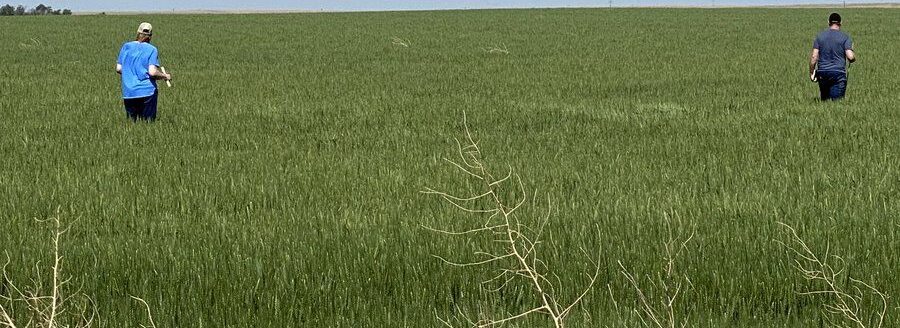Following three days of scouting and comparing notes the final consensus of the Kansas wheat crop could reach 365 million bushels—more than 34 million higher than government estimates.
David Green, executive vice president of the Wheat Quality Council, said the estimate was derived after 350 stops, which included a three-day average estimate of 58.1 bushels per acre. The Wheat Quality Council hosts the annual Hard Winter Wheat Tour, which was May 17 to 20, and final projection for the Kansas crop was issued May 20.
If the Kansas crop hits 58 bushels an acre it would exceed the previous record of 57 bushels per acre recorded in 2016. The U.S. Department of Agriculture projected 48 bushels per acre and 331 million bushels. Kansas had planted about 7.3 million acres.
The tour included estimates from 13 bushels to 125 bushels per acre.
Aaron Harries, vice president of research and operations for the Kansas Wheat Commission and Kansas Association of Wheat Growers, said trying to do an estimate, when some regions are six or more weeks out from harvest, is a difficult task and when it appeared to be at its peak.
Both noted good wheat, but also stripe rust and weed pressure as a result of prolonged stretch of rain.
“Water is something I would keep an eye on,” Harries said.
That can worsen rust and the rain can wash off fungicides. Wheat scab can be a concern, too, he said. Fusarium head blight, known as wheat scab, infects the developing grain heads.
Quality of the crop can also become a headache is another area for concern when the weather does not cooperate, he said.
“There is always a difference between quality and yield,” Harries said. “We are seeing this crop at maximum and hopefully we won’t see any hail or excessive rain.”
One plus, experts said, despite drought hurdles wheat genetics have improved substantially in the past decade. Harries said wheat checkoff dollars have helped reshape today’s crop. He said Romulo Lollato, an associate professor of wheat and forage production at Kansas State University, is focused on increasing yield and continuing to improve quality and that is another example of positive news for the industry.
Green said in advance of this year’s tour it made him nervous because of all the challenges this year’s crop faced most notably heavy rains in several regions during the tour.
Some of the observers told him they thought the crop’s potential was more likely to go down but up but he was not “ready to go down that road.”
The tour also included reports from Nebraska, Oklahoma and Colorado.
Oklahoma’s forecast was just under 3 million harvested acres that will average about 37 bushels per acre for a total yield of 110 million bushels.
Nebraska is expecting a yield of about 47 bushels per acre yield, according to the May 12 National Agricultural Statistics Service report. Winter wheat seedings were about 900,000 acres. Colorado Wheat reports an expected harvest of about 65 million bushels, Colorado Wheat is projecting a yield of about 37.3 bushels per acre, he said in providing that organization’s report.
Dave Bergmeier can be reached at 620-227-1822 or [email protected].
Sign up for HPJ Insights
Our weekly newsletter delivers the latest news straight to your inbox including breaking news, our exclusive columns and much more.




